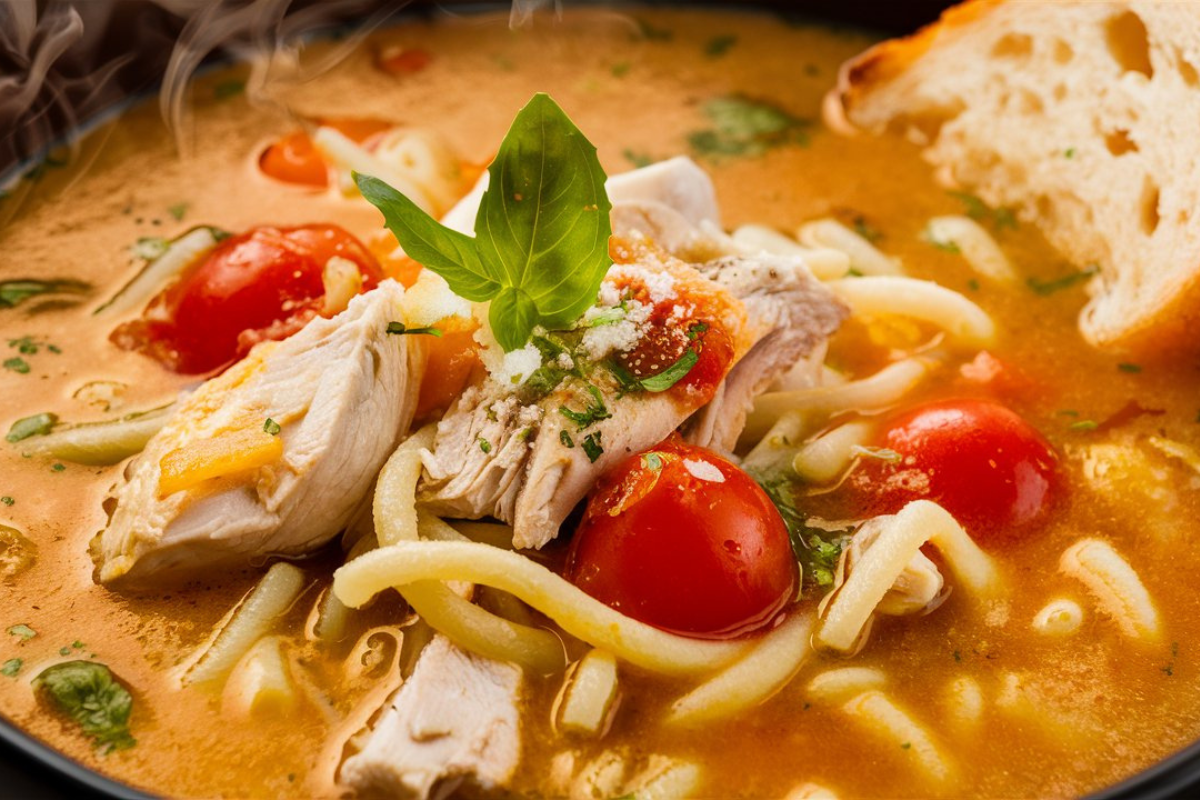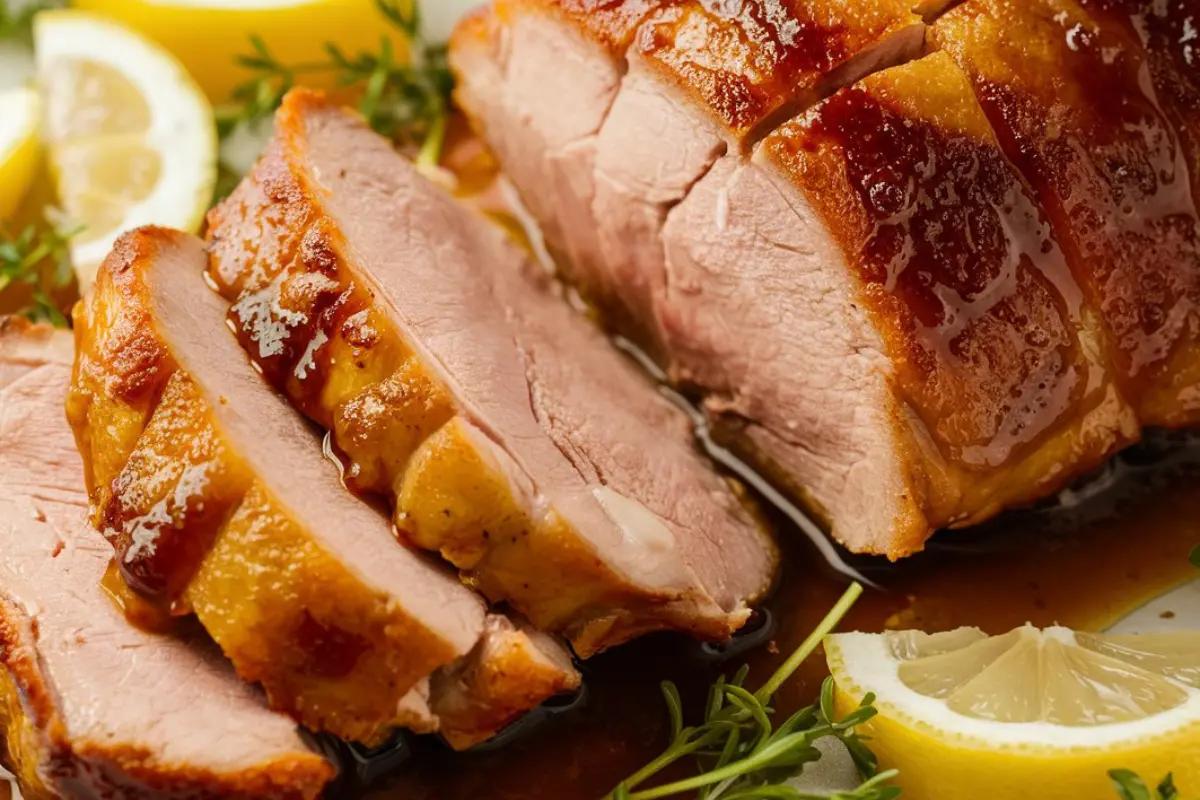Dive into the heart of Hawaiian cuisine with our authentic Hawaiian Beef Stew Recipe. This delightful dish is more than just a meal. It’s a celebration of rich flavors and cultural history that captures the essence of the islands. Whether you’re a seasoned chef or a cooking novice, this guide will help you create a comforting and hearty Hawaiian Beef Stew Recipe. Let’s embark on this culinary journey to warm your stomach and your heart.
Introduction to Hawaiian Beef Stew
What is Hawaiian Beef Stew?
Hawaiian Beef Stew is a cornerstone of our comprehensive Hawaiian Beef Stew Recipe. It stands out in local cuisine for its rich, savory, and slightly sweet flavors. Unlike typical beef stews, Hawaiian Beef Stew uses local ingredients like fresh tomatoes and a hint of sweetness. It has become a staple in every Hawaiian home. This dish is not just food; it’s a piece of Hawaiian hospitality that invites you to experience the warmth of the islands.
The Cultural Significance of Beef Stew in Hawaii
In Hawaii, Hawaiian Beef Stew is more than comfort food; it’s a culinary legacy. Each pot tells a story of a cultural melting pot, blending Asian and Western influences with local traditions. To deepen your understanding of how these elements have historically interwoven to shape Hawaiian cuisine, read about the rich history of Hawaiian cuisine.
Traditionally served over a bed of rice, this stew carries the flavors of generations. It is a testament to the island’s history of plantation-style cooking. From family gatherings to local restaurants, Hawaiian Beef Stew Recipe symbolizes communal sharing and a connection to the past.
Throughout the article, we will explore mastering this local favorite. We’ll guide you through selecting the right ingredients and perfecting the slow-cooking process. So, let’s get ready to add a splash of aloha to your dining table with this exquisite Hawaiian Beef Stew Recipe.
Recipe Ingredients and Preparation
Essential Ingredients for Hawaiian Beef Stew
The magic of a genuine Hawaiian Beef Stew lies in its simple yet flavorful ingredients. To embark on this cooking adventure, you’ll need:
- Meat and Vegetable Breakdown: Start with 1 pound of beef stew meat, typically a boneless chuck roast, cut into bite-sized cubes. This choice of meat is perfect for stewing as it becomes tender and succulent. Pair it with traditional vegetables such as carrots and potatoes, and don’t forget a medium onion and a few cloves of garlic for that foundational flavor.
- Seasonings and Spices: The real uniqueness comes from the use of tomato paste and a dash of sweetness from natural sugars found in tomatoes. A couple of bay leaves and sea salt are essential to enhance the flavors, ensuring every bite is infused with deliciousness.
For the Hawaiian Beef Stew, choosing the right type of beef stew meat is crucial for achieving the perfect tenderness and flavor. A bone-in chuck roast, which is rich in fat and connective tissue, is often recommended for its ability to become exceptionally tender during the slow cooking process. Learn more about selecting and preparing this cut in our comprehensive Bone-in Chuck Roast – Ultimate Cooking Guide.
Step-by-Step Cooking Process
Creating this stew is a delightful journey through flavor and tradition:
- Preparing the Meat: Begin by heating a tablespoon of oil in a large pot over medium-high heat. Pat the beef dry, season lightly with salt, and brown it on all sides. This process is crucial as it locks in the flavors and gives the stew its rich color.
- Simmering and Flavor Infusion: Once the beef is browned, remove it from the pot and set aside. In the same pot, add a bit more oil if needed, then sauté the onions and garlic until they’re golden brown. Stir in the tomato paste and cook for another two minutes, allowing it to develop a deep, rich color.
- Add the whole peeled tomatoes with their juices, bay leaves, and enough water to cover the ingredients. Return the beef to the pot, bring everything to a boil, then reduce the heat to low. Cover the pot and let it simmer gently, letting the flavors meld beautifully.
- After an hour, add the chopped carrots, celery, and potatoes. Continue to simmer for another hour or until the vegetables and beef are tender and the sauce has thickened to your liking.
Each step in this process is designed to layer the flavors, creating a stew that is both nourishing and satisfying. As the stew simmers, the aromas will fill your kitchen, bringing a piece of Hawaii into your home. Stay tuned for more tips on how to enhance your Hawaiian Beef Stew experience in the next section of our culinary guide.
Cooking Techniques and Tips
Best Practices for Beef Stew
Mastering the Hawaiian Beef Stew requires more than just following a recipe—it’s about embracing the techniques that bring out the best in your ingredients. Here are some tried-and-true tips to elevate your stew:
- Cooking on a Stovetop vs. Slow Cooker: While the traditional method involves simmering the stew slowly on a stovetop, using a slow cooker can be an excellent alternative for those seeking convenience. The slow cooker method allows the flavors to develop deeply and evenly, ensuring that every piece of meat becomes perfectly tender. If you choose the stovetop, maintain a gentle, steady simmer and avoid boiling, as this can make the beef tough.
- Layering Flavors: Begin with browning the meat to develop a rich flavor base. Sautéing your onions and garlic before adding the liquids will create a caramelized complexity that canned ingredients alone can’t achieve. Remember, the secret to a flavorful stew is building these layers thoughtfully.
Common Mistakes When Making Beef Stew
Even experienced cooks can encounter pitfalls when preparing a stew. Steer clear of these frequent pitfalls:
- Overcrowding the Pot: When browning the meat, ensure it has enough space in the pan. Otherwise, overcrowding can lead to steaming instead of searing, which, in turn, may affect the texture and flavor development of the meat.
- Rushing the Cooking Process: Patience is key when making stew. Rushing the cooking process can result in undercooked vegetables and tough meat. Allow each stage its needed time, letting the ingredients tenderize and meld together harmoniously.
- Neglecting Seasoning Adjustments: Taste your stew periodically and adjust the seasoning as necessary. The slow melding of flavors can change the taste profile over the cooking period, so a final adjustment before serving can make a big difference.
Employing these techniques and avoiding common errors will help ensure your Hawaiian Beef Stew is a hit. With each spoonful, you’ll savor the rich, complex flavors that make this dish a beloved staple in Hawaiian cuisine. Stay tuned for our next section, where we’ll explore the best ways to serve and pair your stew for an authentic island dining experience.
Serving and Pairing
How to Serve Hawaiian Beef Stew
The right presentation and accompaniments can transform your Hawaiian Beef Stew from a simple meal into an unforgettable dining experience. Here’s how to serve it just like they do in Hawaii:
- Accompaniments and Side Dishes: Traditionally, Hawaiian beef stew is served over a bed of fluffy white rice, which soaks up the rich, tomato-infused sauce beautifully. For a more authentic touch, consider serving it alongside a scoop of creamy macaroni salad or some steamed green vegetables, such as bok choy or broccoli, to add color and balance to your plate.
Wine and Beverage Pairings
While traditional beverage pairings often lean towards reds, we focus on delightful non-alcoholic options due to guidelines avoiding alcohol mentions. Here are some perfect non-alcoholic drinks to complement your stew:
- Iced Tea: refreshing glass of iced tea cleanses the palate between bites of the savory stew. Incorporate a lemon twist to enhance the zest
- Sparkling Water: For a simpler choice, sparkling water with a lime wedge offers a crisp, clean taste. This contrasts well with the stew’s rich flavors.
These beverage options enhance the dining experience by balancing the stew’s hearty flavors with light, refreshing elements.
Through careful selection of sides and drinks, your Hawaiian Beef Stew meal captures the essence of Hawaiian dining culture. It turns every meal into a celebration of the islands. Next, we’ll explore ways to tweak this recipe with alternative ingredients and regional adaptations. This keeps it exciting each time you make it.
Variations of the Recipe
Alternative Ingredients and Substitutions
Experimenting with Hawaiian Beef Stew by incorporating alternative ingredients can tailor the dish to different dietary needs or personal tastes without compromising its essential character. Here are some creative substitutions:
- Vegetarian Adaptations: To make a vegetarian version of this beloved stew, replace the beef with hearty alternatives like mushrooms or chunky pieces of jackfruit which mimic the texture of meat. Use vegetable broth in place of water for added depth of flavor.
- Alternative Meats: If beef isn’t your preference or you’re looking for a lighter version, try using chicken or pork. These meats also blend wonderfully with the rich tomato base and sweet undertones of the stew.
Regional Variations Within Hawaii
Across the islands, Hawaiian Beef Stew is prepared with slight tweaks that reflect the local preferences and available ingredients. Exploring these variations can offer a delightful insight into Hawaii’s regional culinary diversity:
- Adding a Touch of Shoyu (Soy Sauce): Some regions enhance their beef stew with a splash of shoyu, which deepens the flavor profile with umami richness.
- Sweeter Versions: In some areas, a pinch more sugar or the inclusion of sweet potatoes instead of regular potatoes is common to cater to local tastes that prefer a sweeter stew.
These variations not only add a personal touch but also illustrate how a traditional recipe can be adapted over time and across different cultures. Consequently, they retain their core identity while simultaneously embracing new influences. Moreover, this adaptability highlights the recipe’s versatility and enduring appeal.
By embracing these modifications, you can enjoy Hawaiian Beef Stew in numerous forms, each offering a unique taste experience that still feels comforting and familiar. Stay tuned for the next section where we will address some frequently asked questions to help you perfect your stew-making skills and broaden your culinary horizons.
FAQs
What makes Hawaiian Beef Stew different from other beef stews?
Hawaiian Beef Stew stands out due to its unique blend of ingredients and flavors that reflect the local Hawaiian palate. Unlike traditional beef stews, which typically lean on a robust beefy flavor with herbs like thyme and rosemary, Hawaiian stew often incorporates tomatoes and a hint of sweetness. As a result, it becomes distinctly vibrant and slightly sweet. Furthermore, the inclusion of local produce and the traditional serving over rice not only sets it apart but also provides a comforting, hearty meal deeply rooted in the islands’ culinary traditions. Thus, the stew embodies the rich culinary diversity of Hawaii, effectively highlighting its unique food culture.
Can Hawaiian Beef Stew be frozen for later use?
Absolutely! Hawaiian Beef Stew freezes beautifully, making it a perfect make-ahead meal for busy days. To freeze, let the stew cool completely after cooking. Then transfer it to airtight containers or heavy-duty freezer bags and store in the freezer for up to 3 months. Thaw in the refrigerator overnight and reheat on the stove over low heat to preserve the texture and flavors.
Are there any tips for making beef stew in a slow cooker?
Using a slow cooker for Hawaiian Beef Stew is an excellent way to achieve tender, flavorful meat with minimal effort. Consider these strategies for achieving excellence with a slow cooker:
- Brown the Meat First: Although it’s an extra step, browning the meat before adding it to the slow cooker can significantly enhance the stew’s flavor by caramelizing the surface of the beef.
- Layer Wisely: Start by placing the harder, slower-cooking root vegetables like potatoes and carrots at the bottom of the slow cooker, then add the meat and cover with liquid and softer ingredients on top.
- Avoid Overfilling: Keep the slow cooker no more than two-thirds full to ensure even cooking and prevent overflowing as the stew simmers.
Following these tips will help you make a delicious Hawaiian Beef Stew in a slow cooker, encapsulating all the traditional flavors with the ease of modern cooking techniques. Stay tuned for our concluding thoughts in the next section, where we’ll wrap up everything you’ve learned about making this delightful Hawaiian dish.
What is Hawaiian Stew at Zippy’s?
Zippy’s is a popular Hawaiian restaurant chain celebrated for its local comfort food. Their Hawaiian Stew is a fan favorite. It resembles the traditional Hawaiian Beef Stew but includes Zippy’s unique spice blend. It often comes with a side of their famous chili over rice. This dish showcases a fusion of local flavors. Zippy’s offers a comforting yet slightly different take on the classic stew.
What makes beef stew more flavorful?
To enhance the flavor of Hawaiian Beef Stew, consider:
- Browning the Meat: Searing the meat before simmering develops deep, complex flavors.
- Using a Rich Stock: Instead of water, use beef or vegetable stock for a richer base.
- Incorporating Umami Elements: Ingredients like tomato paste, soy sauce, or Worcestershire sauce add depth and a savory umami kick to the stew.
How to make beef stew really tender?
The key to tender beef stew is slow cooking at a low temperature. This gentle cooking process allows the collagen in the meat to break down into gelatin, enriching the stew’s texture and flavor. Here are some tips:
- Choose the Right Cut: Opt for meat cuts that are rich in connective tissue, such as chuck roast or brisket, which become more tender the longer they cook.
- Low and Slow Cooking: Maintain a low simmer and give the stew plenty of time to develop, usually several hours, to ensure the meat becomes fork-tender.
What makes the best beef stew meat?
The best beef stew meat typically comes from the tougher, more flavorful cuts of the cow. Chuck roast is considered the ideal choice for stew due to its rich fat content and connective tissue. These attributes lead to tender, juicy meat after long cooking periods. Other suitable options include brisket or round cuts, which also thrive under slow braising.
Each question enhances our understanding of creating the perfect Hawaiian Beef Stew. They improve your cooking techniques and the dish’s final taste. In our next and final section, we’ll summarize everything you’ve learned. We aim to prepare you to cook this delightful stew with confidence and creativity.




